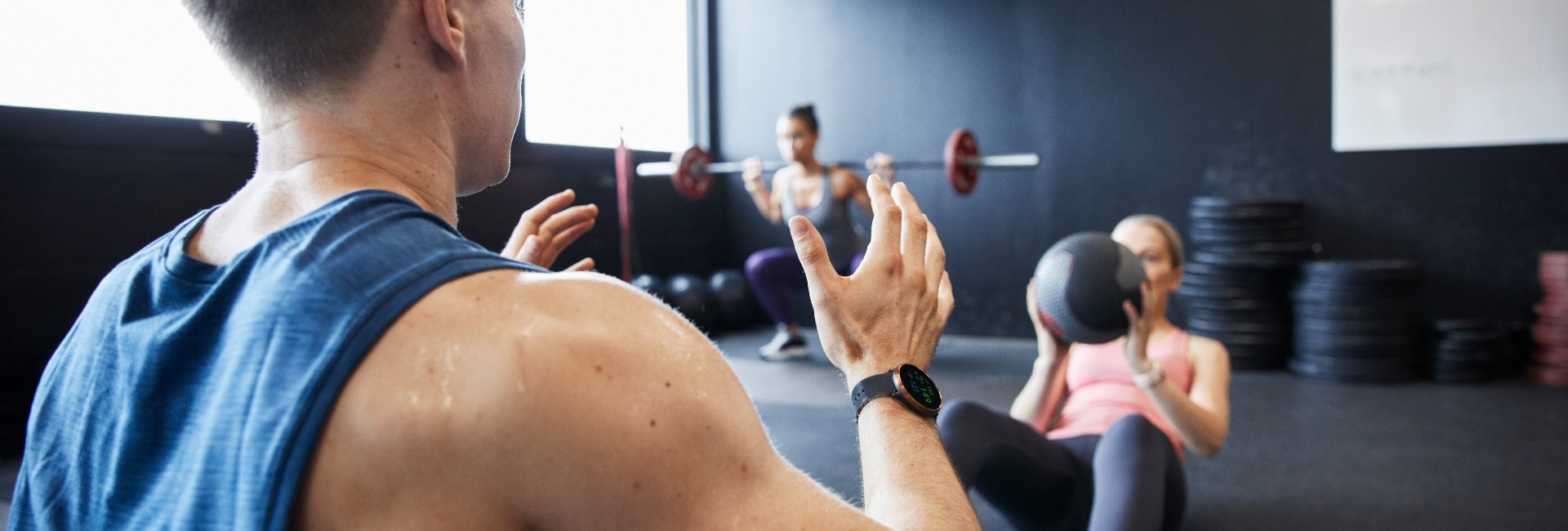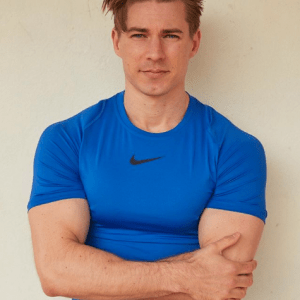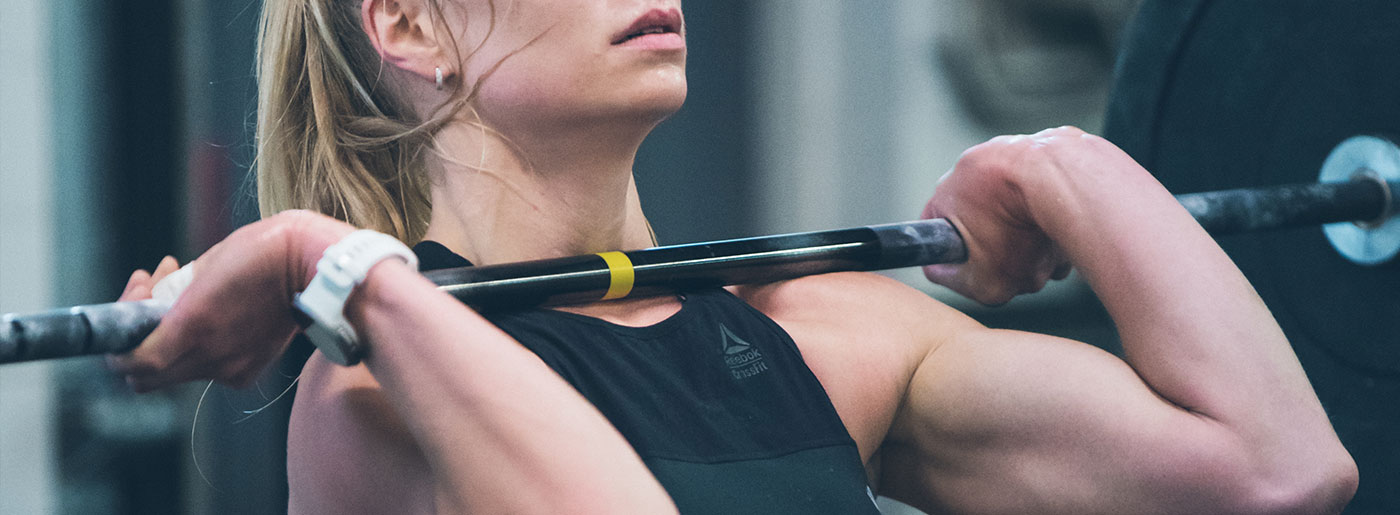Ask 10 people what functional training is and you’ll get 10 different answers. Google the term, and you’ll see images of tire flipping, kettlebell swings and a host of other movements and unconventional exercises.
There’s also plenty of buzz around the benefits of functional training, but no clear cut definition.
So, rather than add to the confusion, let’s pose a different question…
What’s the goal of functional training?
To answer this, take a moment to think about why you train.
While we all have our own personal motivations and fitness goals, it generally falls somewhere between:
- Look better
- Feel better
- Perform better
It’s that last point – perform better – that functional training aims to address by helping you to:
- Upgrade the way your body moves and functions
- Improve your strength across movement patterns
- Increase the physical performance of your body
Functional training (done right) has a huge carry over to life outside the gym. So, whether you’re training for sport or the game of life, everyone can benefit from it.
What are the Benefits of Functional Training?
Injury Prevention
- Functional training greatly improves strength and stability across a variety of movements. This makes your joints better protected and muscles more resistant to common injuries like strains.
- The well-balanced nature of training ensures that you don’t develop any weak links which is a very common reason why active people so often get injured.
Better Mobility
- Training across movement patterns ensures that your joints are moving through a full range of motion and that you are building strength across a full range of motion.This is key to maintaining proper joint function.
- Improving core stability also goes hand in hand with mobility gains. A classic expression by Dr Stuart Mcgill – “Proximal stability for distal mobility”.
‘Real World’ Strength
- Building muscle in isolation does not transfer well to life outside the gym. Functional training does. This means it will improve your ability to perform every day tasks like carrying your groceries, mowing your lawn and picking up your kids.
- It will also improve your performance across recreational physical activities that you enjoy doing – whether that’s riding a bike, hiking, climbing or something more team sport oriented like playing football or basketball.
Athletic Performance
- Functional training will improve your athleticism. Whole body strength, stability and movement quality will all be greatly enhanced.
- You’ll also be more robust and resilient to injury. All in all, this is going to transfer to better athletic performance.
Get in better shape
- Functional training is purpose-driven training, but also fun and varied, which will keep you engaged.
- It works your whole body out by favouring multi-joint exercises, building strength and muscle in a functional and balanced way. Because of this, it’s sustainable and will have you seeing improvements over the long haul.
How to define Functional Training?
Because of lack of clarity about what functional training actually is, it will help to establish some defining characteristics as we take a look at some examples of functional training exercises.
For the record: Standing on a bosu ball performing squats is not functional training. Anything that resembles this is just downright dangerous and will not lead to performance enhancement. It’s exercises like this that give functional training a bad rap.
Here’s what functional training really is.
Based on movement patterns, not muscles
Fitness culture today has been heavily influenced by the golden age of bodybuilding. It’s why most commercial gyms are crammed with machines. The problem with machines is that they are designed to target your muscles in isolation. And that’s not how your body is supposed to function.
Should make you stronger relative to your body weight
This is closely linked with the above point. Free weights and body loaded exercises are prioritized to improve coordination, stability and strength relative to your own body weight. This will greatly enhance your functionality and athleticism.
Trains the core for its purpose
Building a strong and stable core is not just going to enhance physical performance, it’s also pivotal for protecting your lower back.
The core is not there to bend and twist the spine so crunches and sit-ups are out. The main purpose of the core is actually to resist motion. It keeps your spine stable and lets you transfer force effectively through the legs and arms.
Should be multi-planar
There are three planes of human motion:
- The saggital plane (forward and back)
- The frontal plane (side to side)
- The transverse plane (rotation)
Most traditional training methods occur in the saggital plane, but if we want a carry over to better real world functionality, it’s important to address all three.
For example, a split squat might appear as a saggital plane exercise, but your body is actually stabilizing in both the frontal and transverse plane.
If you do functional training as suggested below, training across the five fundamental movement patterns and three core training categories (see next point), all three planes of motion will be addressed. And in truth, there are elements of them all in many exercises, particularly single leg work.
Functional Training Movements
Functional training is based on the five fundamental human movement patterns and three core training categories. The goal is to develop movement proficiency and strength equally across them all.
TWO UPPER BODY FUNCTIONAL TRAINING PATTERNS
1. Upper Body Pushing (both horizontal and vertical)
- Push-Ups
- Dumbbell Press
- Overhead Press
2. Upper Body Pulling (both horizontal and vertical)
- Pull Ups
- Dumbbell Rows
- Face Pulls
THREE LOWER BODY FUNCTIONAL TRAINING PATTERNS
1. Lower Body Squats
- Goblet Squats
- Barbell Squats
- Landmine Squats
2. Lower Body Hinge
- Hip Thrusts
- Romanian Deadlifts
- Back Extensions
3. Lower Body Lunge / Split Stance
- Split Squats
- Step Ups
- Reverse Lunges
THREE MAIN CATEGORIES OF FUNCTIONAL CORE TRAINING
All of these are present in sport and every day life movements.
1. Anti-Extension
- Planks
- Dead Bugs
- Body Saws.
2. Anti-Lateral Flexion
- Side Planks
- Windmill Planks
- Suitcase Holds or Carries
3. Anti-Rotation / Rotation
- Cable Chops & Lifts
- Palloff Presses
EXAMPLES OF ‘PURE’ FUNCTIONAL TRAINING MOVEMENTS
If you train across the five fundamental movement patterns and three core training categories, all three planes of motion will be addressed, but there are also some ‘pure’ movements, such as:
A cable chop is a rotational movement (transverse plane).
A lateral squat is a side to side movement (frontal plane).
A goblet squat is a forward and back movement (saggital plane).
What about cardio?
We’ve talked about functional training in the context of resistance training, but it’s important to mention that to be a truly functional human being, you should balance your resistance training with cardio.
Cardio will improve your heart health, general fitness and ability to recover. It’s going to give you the energy to train hard and recover fast, so you never burn out from exercise and always make sustainable gains.
So, for best results, try to include some form of both in your training program to upgrade the performance of your body and increase the quality of your life.
If you liked this post, don’t forget to share so that others can find it, too.
Or give it a thumbs up!
I like this article
Please note that the information provided in the Polar Blog articles cannot replace individual advice from health professionals. Please consult your physician before starting a new fitness program.






